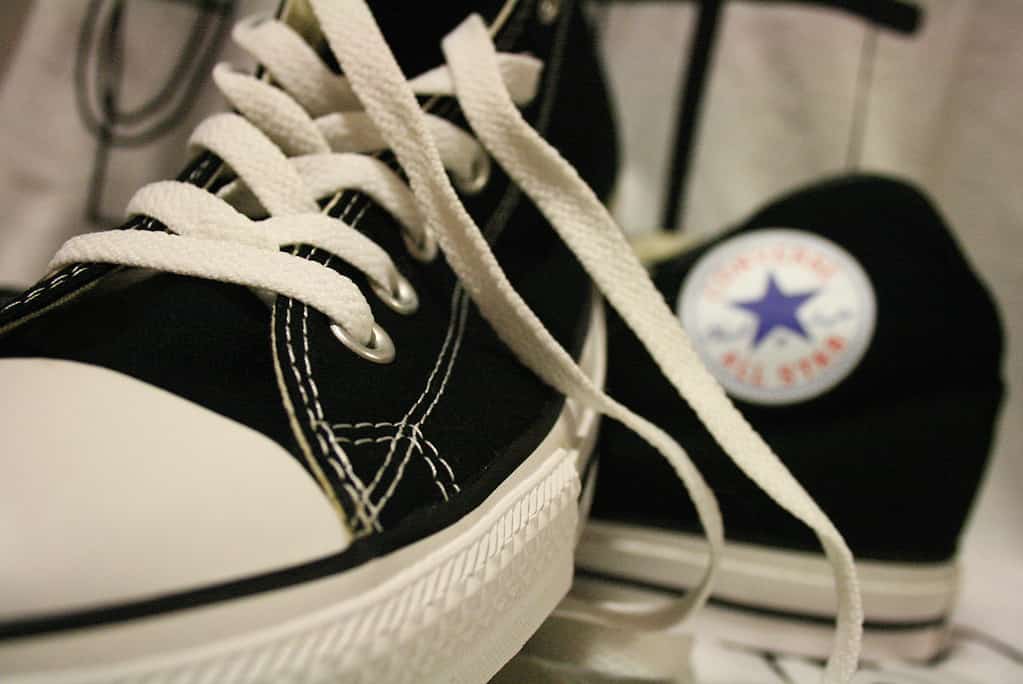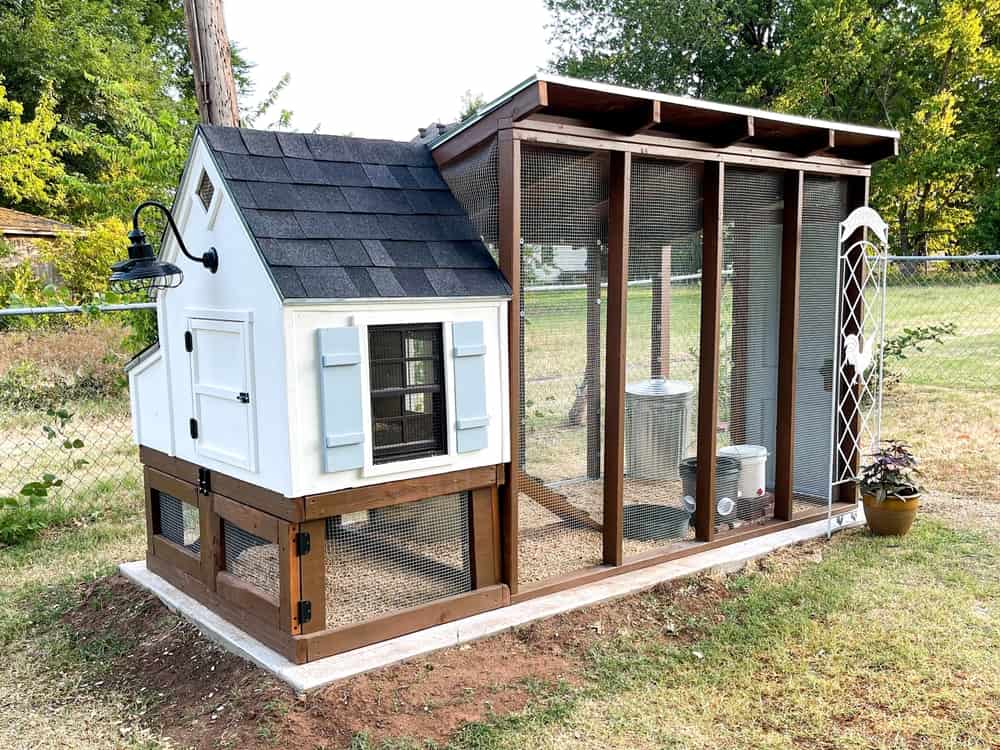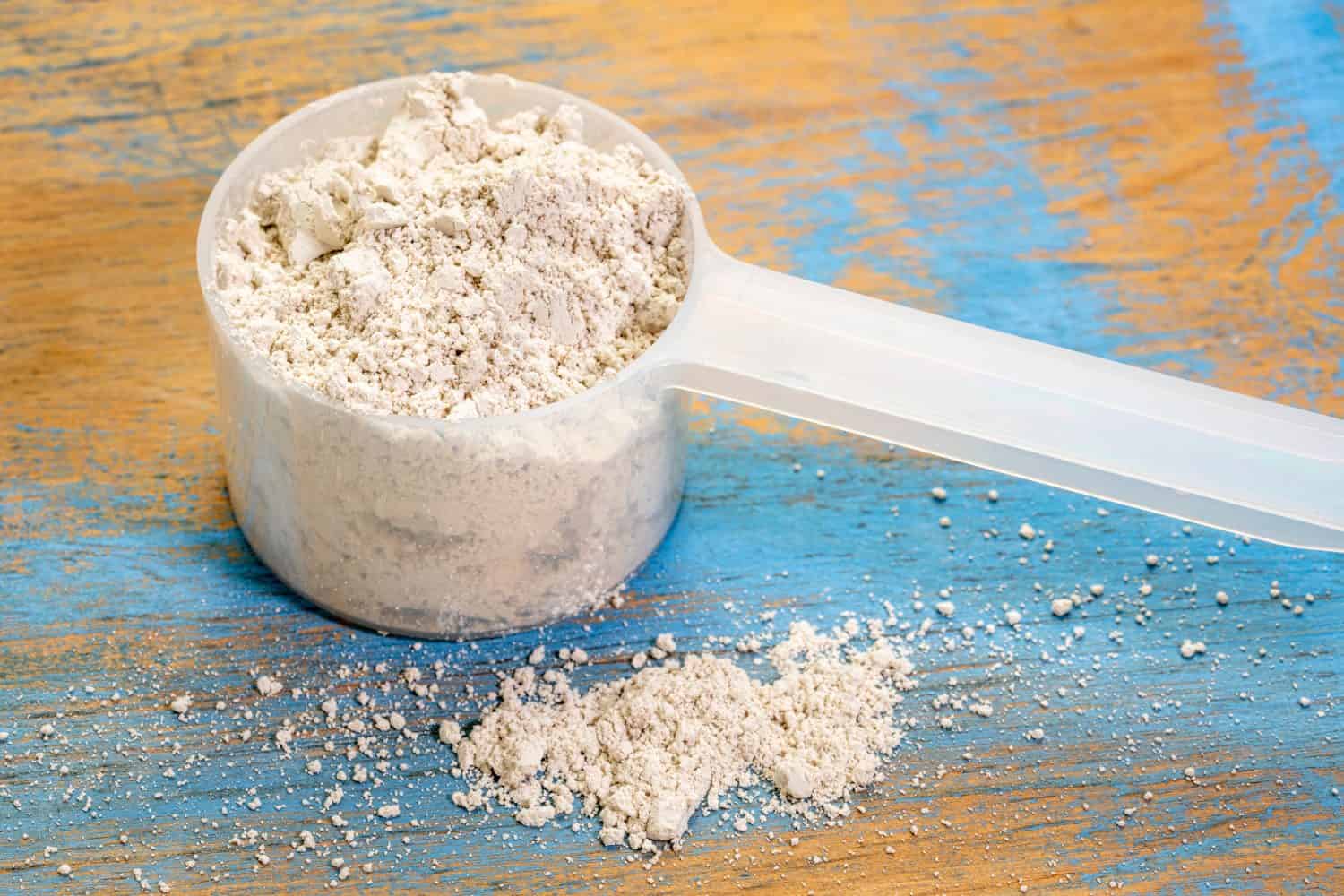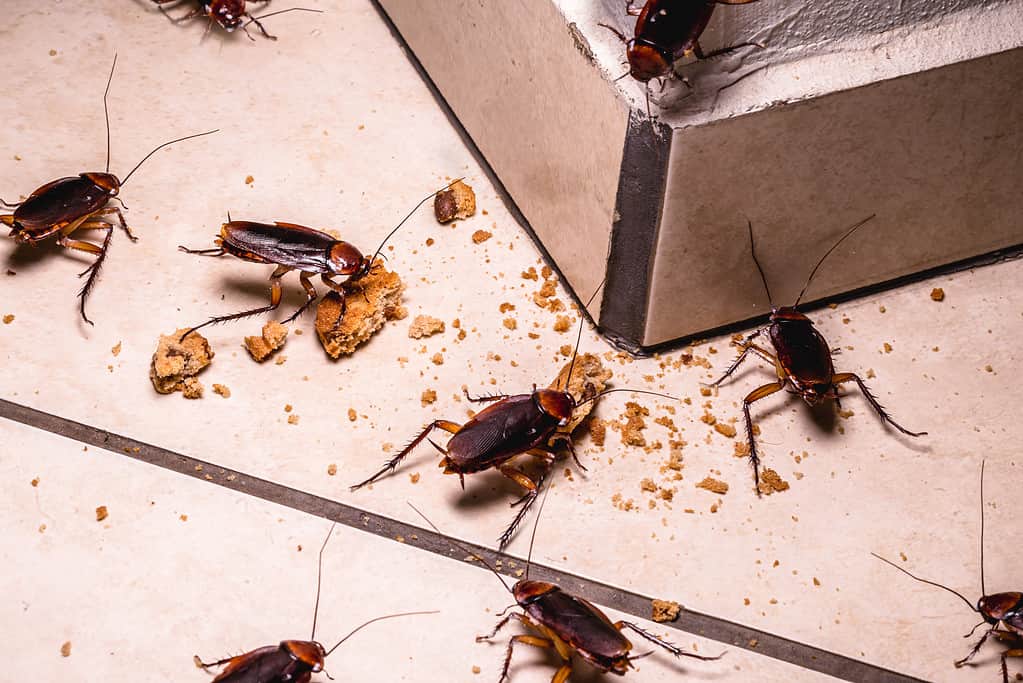Diatomaceous earth is a household essential, but not many folks know about its myriad benefits. Let’s take a look at what exactly diatomaceous earth is and what you can do with it to benefit your lifestyle.
What Is Diatomaceous Earth?
Diatomaceous earth, often shortened to DE, is the fossilized skeletons of single-cell aquatic algae called diatoms. That’s where the name “diatomaceous” comes from.
These little skeletons are formed from silica, and their fossilized remains accumulate over time in oceans, lakes, and streams. Today’s marine animals use it to form their own protective shells, and we mine it.
Thousands of modern products include DE, such as toothpaste, medicines, foods, cattle feed, and paints.

Diatomaceous earth is mined from the ground.
©Michael Paschos/Shutterstock.com
Is DE Safe to Use at Home?
The United States Food and Drug Administration (FDA) says diatomaceous earth is “generally recognized as safe.” It’s a natural substance that’s not poisonous. As a result of its safe nature, DE has many uses around the home.
Only 100% natural diatomaceous earth should be used around your home. Pool-grade earth is not suitable for consumption or inhalation because it’s heated to 1000 degrees centigrade to form crystalline silica used in pool filters.

Only use food-grade diatomaceous earth, not pool-grade, which is heated and isn’t safe.
©GoDog Photo/Shutterstock.com
Human Health
Taking a small amount of food-grade DE in a smoothie or similar may be associated with some health benefits. Anecdotal evidence suggests it may help improve psoriasis, joints, cholesterol, digestion, and gut problems and perk up skin, hair, and energy levels.
It’s worth noting the FDA has sent warning letters to businesses claiming DE is a drug that offers health benefits. Little medical evidence exists on its efficacy. Talk to a qualified professional first if you want to try DE as a health supplement.
Cleaning
Diatomaceous earth’s porous and gently abrasive action means it’s an effective cleaning agent.
- Mix it with vinegar and water to gently clean silver.
- Sprinkle on silverware, then wrap the silverware in cloth to prevent tarnish from atmospheric moisture (wash before use!)
- Its porous structure absorbs smells. Place a small pot in the fridge, breadbin, or overnight in stinky shoes to get rid of odors.
- On clay soil, DE’s hard structure helps break up thick clay soil to let air, light, and water in. This hugely improves plants’ ability to grow.
- Absorbs pet urine and loose poop or vomit, which makes it much easier to clean up.
- Absorbs wine, beer, or juice spillages.

Use diatomaceous earth to deodorize smelly shoes.
©Jon Oakley from Eaglescliffe, England / CC BY 2.0 – License
Pest Control
One of the diatomaceous earth’s most useful applications is anti-pest defense! Here’s why:
- It’s pesticide and chemical-free
- It’s safe around pets
- It’s still effective as long as it’s in place and dry
- It’s cost-effective
- Insects can’t become immune to diatomaceous earth

Diatomaceous earth kills aphids without harmful pesticides.
©Vera Larina/Shutterstock.com
How Does Diatomaceous Earth Kill Bugs?
Diatomaceous earth kills bugs through dehydration.
To us, the minuscule diatom fragments are all but invisible, but their microscopically sharp shards are quite a weapon under a lens.
They kill insects by sticking to their exoskeletons and absorbing liquids, fats, and oils. To speed up the job, DE cuts numerous small wounds. Eventually, it led to desiccation and death. A few studies indicate it can kill unwanted bugs within a few hours, but it usually takes a few days or even weeks for large infestations.
One of DE’s best bug-eliminating aspects is that insects don’t need to eat it to be eliminated. They only have to walk through DE or have it sprinkled on them.
However, DE doesn’t work well when it’s wet because it doesn’t stick to insect exoskeletons. As soon as it dries out (after rainfall, for example), it’ll work again.
Get Rid of These Pests with Diatomaceous Earth
Here are some of the pests that diatomaceous earth kills.

Diatomaceous earth kills red mites in chicken coops and dust baths.
©Courtney Jenckes/Shutterstock.com
Fleas
Food-grade diatomaceous earth is an effective way to get rid of fleas. However, always check with a veterinarian before applying it directly to your pet because it can irritate skin conditions.
Shake DE into pet bedding, carpets, furnishings, and all the homes’ nooks and crannies. Leave it for two weeks to cut and dehydrate fleas. Vacuum it up after a few weeks have passed.
Aphids
Diatomaceous earth is an effective no-pesticide aphid killer. Simply shake it onto garden or houseplant foliage, and it’ll dehydrate aphids without killing bees.
It’s a good idea to shake some DE around the roots, too. This clears up falling aphids, most of which can’t fly back to the leaf-bound colony.
Ants
Ants don’t harm plants, but they farm aphids and enter homes to collect microns of food.
Apply diatomaceous earth to the bases of leafy plants to prevent ants from climbing the stems to tend to their aphid farms.
In your home, sprinkle it around baseboards or any gaps in the woodwork. Ants won’t cross its fearsome spikes, so it’s a good way to prevent breaking and entering as opposed to killing them.
Red Mites
Diatomaceous earth excels in chicken coops. It’s a highly recommended way to deal with red mites. If possible, buy DE in a puff bottle so you can direct it into all the gaps that red mites hide in before emerging at night to feast on your poor hens.
Add lots to their dust baths and, if they’re cooperative hens, onto their feathers, too.
Roaches
Apply DE to crevices and cracks or wherever cockroaches enter your home. Sprinkle it around the baseboards or places they travel, such as across a larder or storage area. Apply a thin layer because roaches won’t cross it if it’s thick.
If your crawlspace is full of roaches, create a pile of diatomaceous earth, then use a leaf blower or a vacuum cleaner on a blow setting to spread a fine layer all over the crawlspace’s surfaces. There’s no need to clean it up! Leave it there to prevent future roach infestations.
Spiders
Spreading diatomaceous earth around the home, especially baseboards, doorframes, and window sills, helps prevent spiders from crawling inside. Add it to the back of pictures and mirrors, too. DE is a must for arachnophobes!
Bed Bugs
Notoriously easy to pick up and difficult to get rid of, bed bugs bite us in the night.
To get rid of them with DE, boil wash linen and apply a fine layer of diatomaceous earth to bed legs to prevent climbing (bed bugs can’t fly) on the mattress, including into the creases, over the headboard (back and front), the springs, slats, and finally under the bed and around it.
It’s also worth lightly dusting curtains, blinds, picture frames, mirrors, and any bedroom furniture. Do this once a week for a month.
What About Slugs and Snails?
We’re out of luck here. Diatomaceous earth doesn’t kill slugs or snails because they don’t have an exoskeleton. It’s mainly used to deal with hard exoskeleton insects. However, anecdotal stories suggest slugs and snails don’t like crossing a line of DE.
What Happens If You Touch Diatomaceous Earth?
Diatomaceous earth kills hard-bodied insects by absorbing the cuticle oils from their exoskeletons. Its sharp edges speed up this process, but the minuscule diatom fossils that create DE are not sharp enough to harm humans.
That said, if it’s breathed in, it can irritate throats, nasal passages, and dry out eyes like most dusts can.
And here’s a big no-no: Always use food-grade diatomaceous earth. Pool or industrial grades are heated and not safe for humans or animals.

Food-grade diatomaceous earth is safe to handle.
©marekuliasz/Shutterstock.com
How Long Does DE Last?
Diatomaceous earth doesn’t break down, so it lasts for months. It only needs reapplying if it’s vacuumed away, dug into the soil, or washed off.
Wet diatomaceous earth is effective again once it’s dried out.
How to Use Diatomaceous Earth Against Pests
Diatomaceous earth is simple to use.
Grab a shaker, a pepper pot, or a spoon, and sprinkle it where you see insect pests.
The best places outside are beneath plants and directly on foliage, in chicken coops, kennels, and stables.
Indoors, use it along baseboards, windowsills, on your mattress, pet bedding, and any nooks and crevices that bugs could hide in.
If you’re struggling to get in place on vertical surfaces, try mixing a spoonful of DE in a water sprayer and spray it into place. Once dry, it’ll cling on and work its magic.

Diatomaceous earth kills cockroaches. Sprinkle DE wherever they scuttle or lurk.
©iStock.com/RHJ
The photo featured at the top of this post is © FotoHelin/Shutterstock.com
Thank you for reading! Have some feedback for us? Contact the AZ Animals editorial team.







